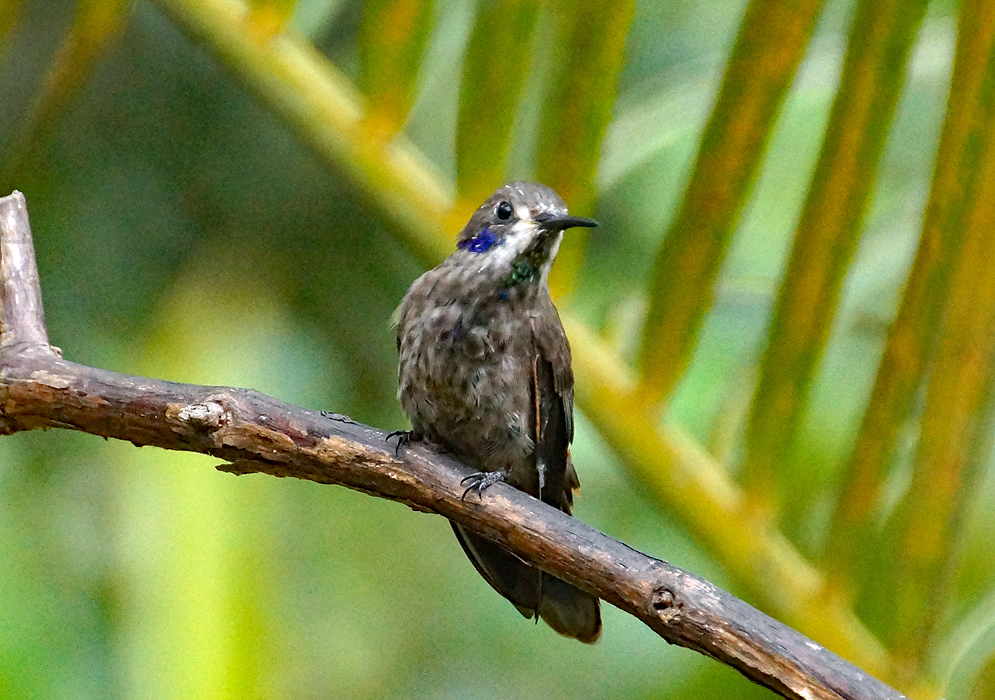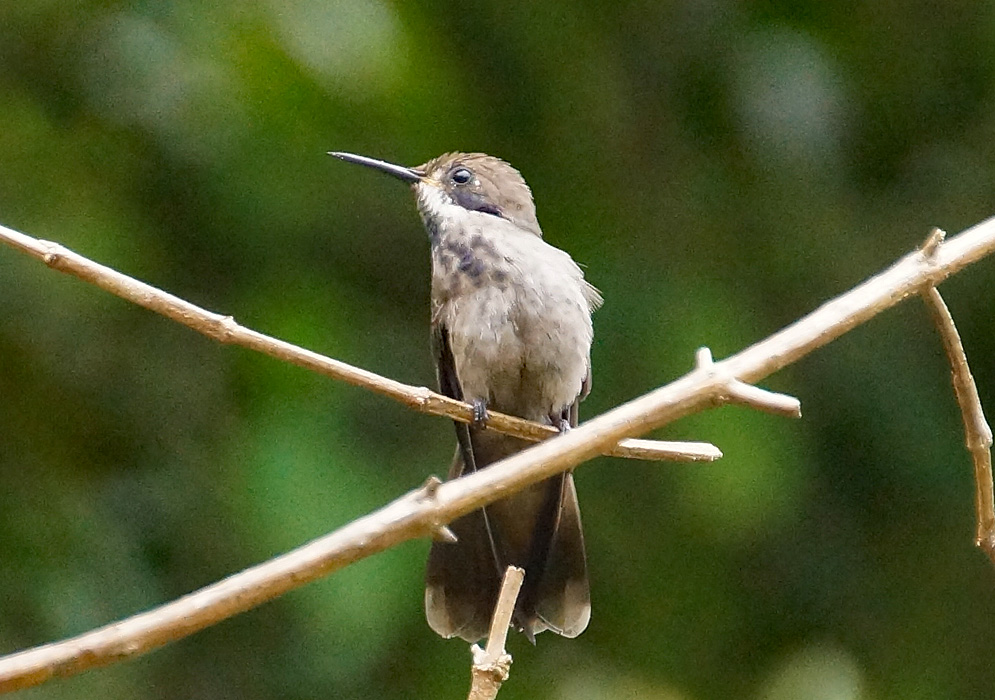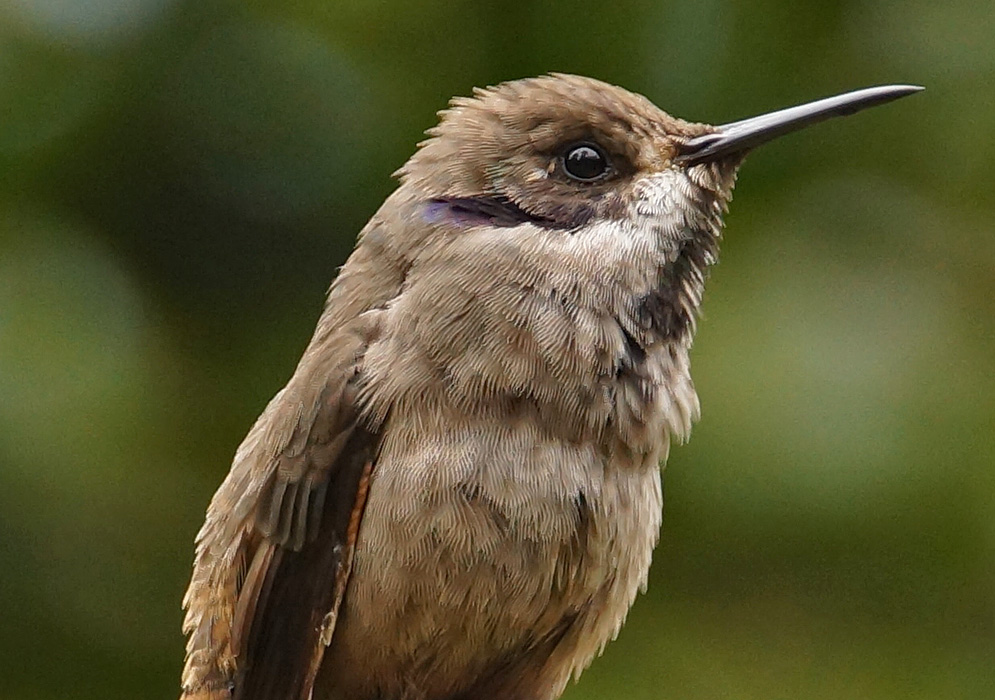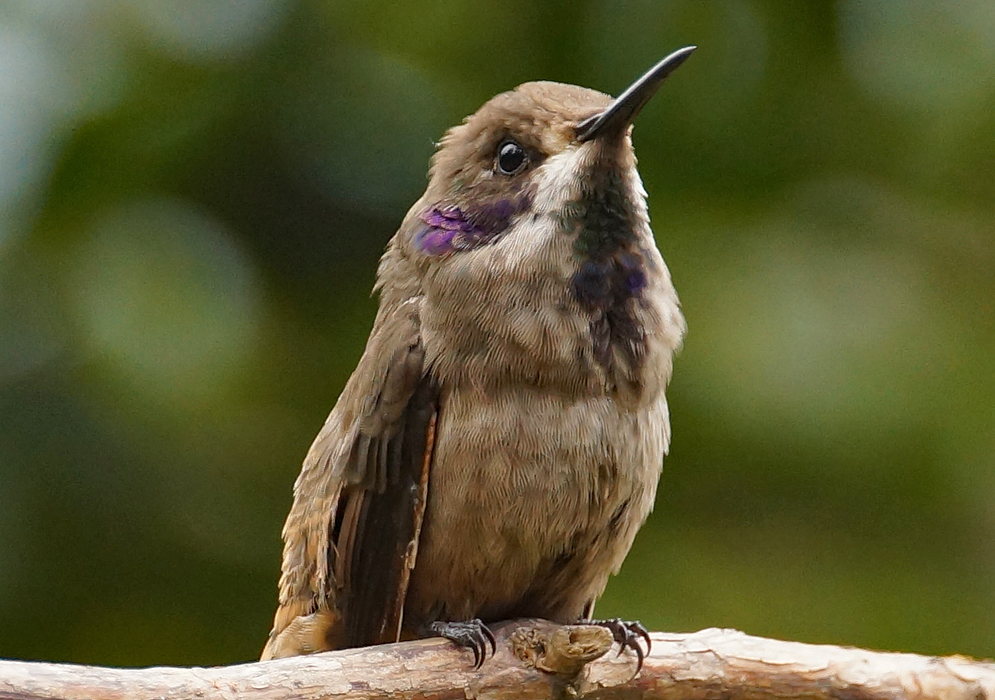This post has 11 Simple Fields-fields attached. Show fields.

The Brown Violetear, is a large hummingbird species native to various regions in Central and South America. This bird primarily breeds at middle elevations in the mountains across these continents, particularly in the Andes and the tepuis, with isolated populations found in Trinidad and the Brazilian state of Bahia. The Brown Violetear is typically found in forests at altitudes ranging from about 1,300 to 5,200 feet. Notably, outside of the nesting season, this species has a tendency to spread widely into the lowlands. It is usually observed high in the canopies of rainforests, tall secondary growth areas, and even coffee plantations. The nests of Brown Violetears are small cups made of plant down, saddled on twigs in bushes, generally between 3 to 10 feet off the ground. The bird is distinguishable by its dull brown coloration with a rufous rump and greyer underparts. A significant identifying feature is a violet patch that extends from behind its eye, accompanied by a hermit-like malar stripe and a glittering green and blue throat stripe. The Brown Violetear is approximately 4.5 inches long and weighs around 0.23 to 0.25 ounces. The females of the species resemble the males but have a smaller throat patch, while immature birds display rufous fringes on their upper parts and little or no violet behind their eyes. Their diet primarily consists of nectar from small flowers of trees, shrubs, and epiphytes, supplemented by insects, which they often catch in flight. Despite not being particularly territorial, the Brown Violetear is known for its high aggression levels, particularly noticeable at feeders where it spends more time attacking other hummingbirds than actually feeding. The Brown Violetear is currently classified as Least Concern on the IUCN Red List of Threatened Species.Photographed in the western Andes mountain range of Colombia (Cordillera Occidental).







